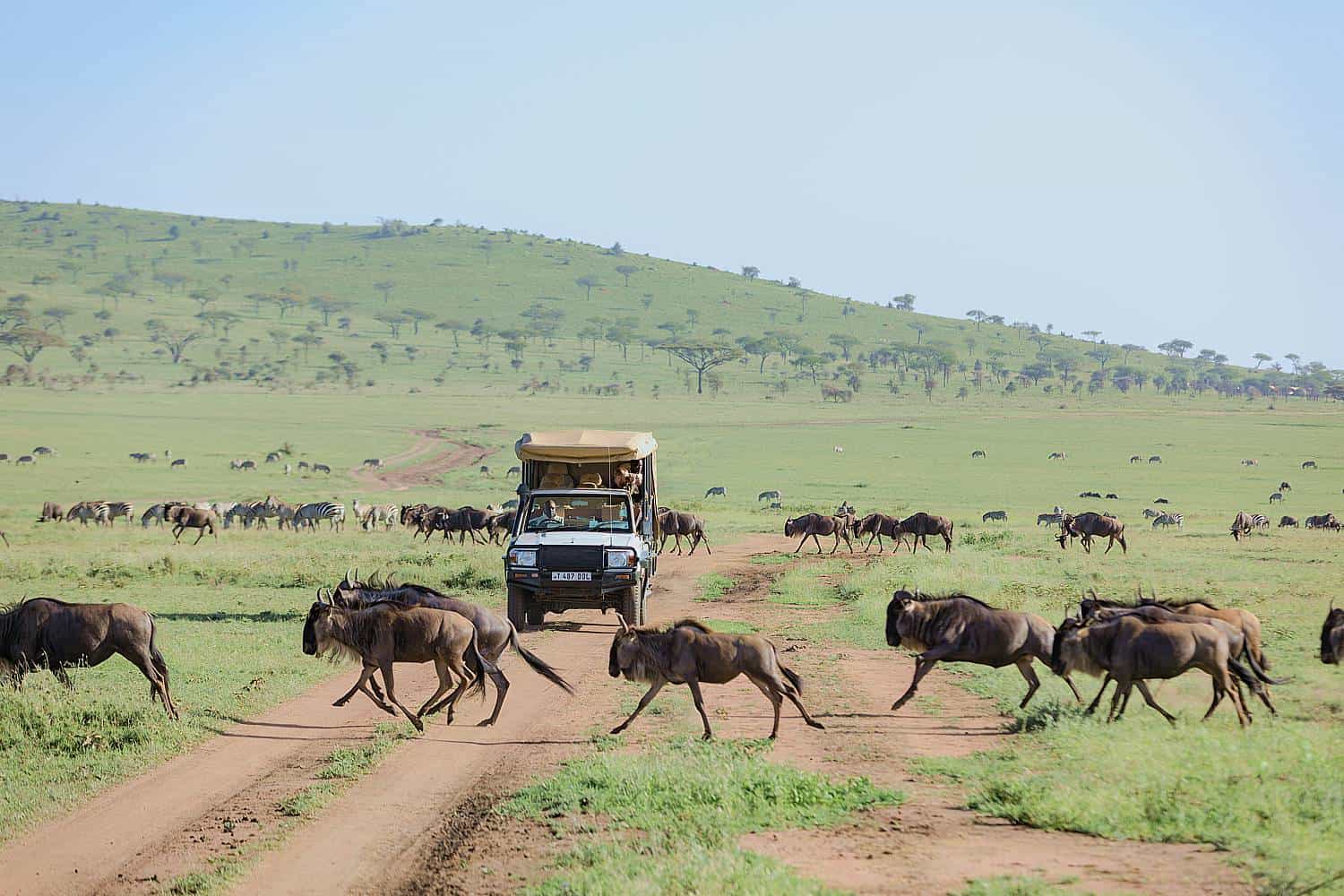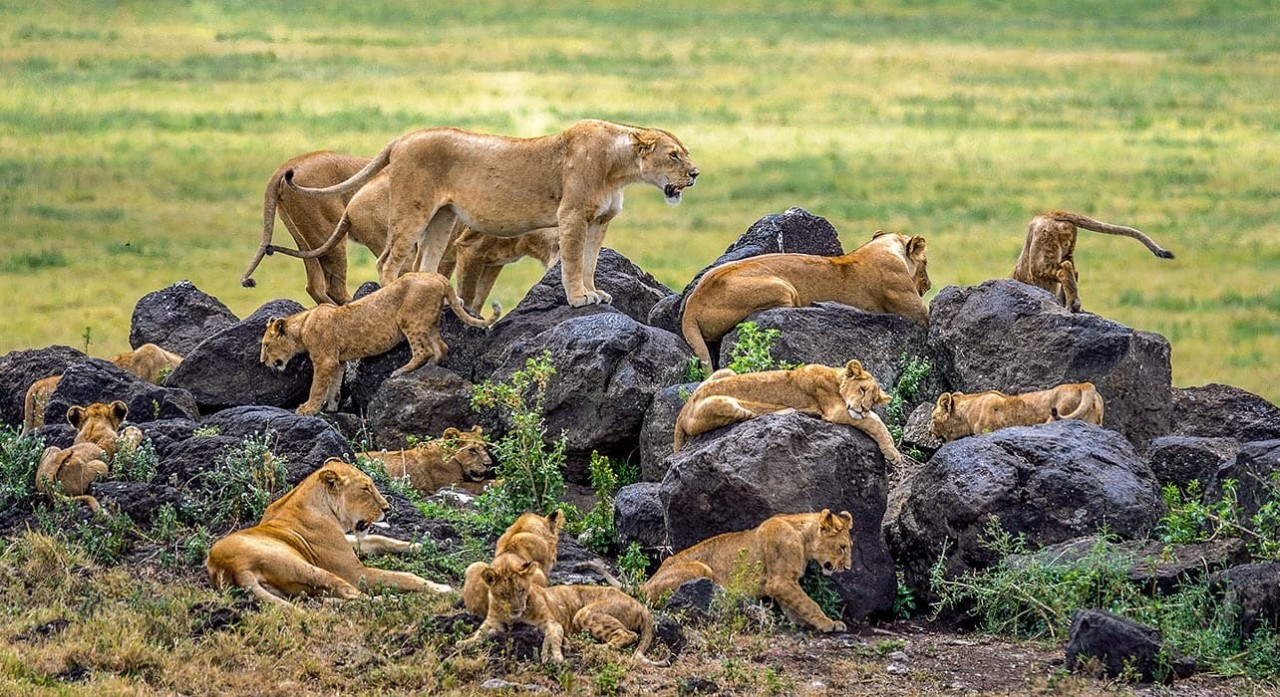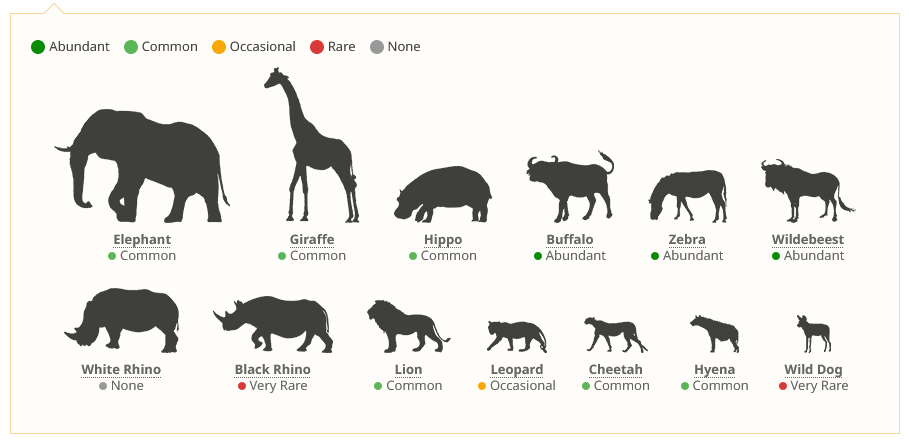Serengeti National Park in Tanzania is one of Africa’s most iconic and diverse ecosystems, renowned for its vast plains, rich wildlife, and annual migration of millions of wildebeests, zebras, and other herbivores. Spanning approximately 14,750 square kilometers, the park is located in northern Tanzania, extending to the Kenyan border, forming a key part of the larger Serengeti ecosystem. It is characterized by its sweeping savannah grasslands, acacia woodlands, and scattered kopjes, which provide habitats for a remarkable array of flora and fauna.

The Serengeti is perhaps best known for the Great Migration, often described as one of the greatest wildlife spectacles on Earth. Each year, around 1.5 million wildebeests, along with hundreds of thousands of zebras and other ungulates, undertake a circular journey spanning over 1,800 miles in search of fresh grazing lands and water. This cyclical movement is dictated by seasonal rainfall patterns, with the animals following the rains in a perpetual quest for sustenance and survival. The migration not only shapes the landscape but also sustains a complex ecosystem, supporting predators such as lions, cheetahs, and hyenas, which rely on the abundant prey.

Apart from the migration, the Serengeti boasts an extraordinary diversity of wildlife throughout the year. It is home to the renowned Big Five (lion, elephant, buffalo, leopard, and rhinoceros), as well as numerous other species including giraffes, hippos, crocodiles, and various antelope species. The park offers exceptional opportunities for wildlife viewing through game drives, hot air balloon safaris, and guided walking tours, allowing visitors to immerse themselves in the beauty and drama of Africa’s untamed wilderness. With its breathtaking landscapes and unparalleled wildlife encounters, Serengeti National Park stands as a symbol of conservation success and remains a must-visit destination for nature enthusiasts and safari-goers alike.
Wildlife viewing is good throughout the year in Serengeti National Park, but certain areas are better at specific times. Most people want to see the wildebeest migration and the predator action that goes with it. The good thing is that you can witness different stages of the migration in Serengeti from around January to October, so most of the year. The bad news is that the movement of the wildebeest depends on the rain and the exact timings are unpredictable.
Around January to February is a fantastic time to be in the Ndutu area for the wildebeest calving. June and July is the best time to be in the Western Corridor, and during August and September the migration is in the north where you might be able to see the famous Mara River crossings. Beware though that the crowds follow this calendar, so for an uncrowded experience you should stay away from the migration.
The climate in Serengeti National Park is usually moderate and pleasant. It never gets very hot, but it is consistently cool to cold at night and in the early mornings. Don’t forget to take warm clothing.
Serengeti’s Dry season is from June to October. The Wet season consists of two rainy periods: the short rains (November to December) and the long rains (March to May), with a dry spell in between. During the Wet season, it rarely rains all day, but afternoon thundershowers can be expected.
Afternoon temperatures are usually around 26°C/79°F. The sky is clear most days. It gets cold at night with minimum temperatures around 14°C/57°F.
As in the Dry season, temperatures are moderate. Afternoon temperatures are usually around 27°C/81°F, and nighttime temperatures are around 15°C/59°F.
Serengeti National Park offers what many consider the essence of an African safari. Massive animal herds march across the wide-open savannah as far as you can see, while predators never fail to add drama to this idyllic scene. You won’t need to drive far to spot lions. Cheetahs are common too. Imagine seeing the world’s fastest land animal in full sprint. Leopards are secretive, but you might find one lazing in one of the big trees along the Seronera River.

The Serengeti is famed for its annual wildebeest migration, when some 8 million hooves cross the open plains. More than 1,500,000 wildebeest, 200,000 zebra and 300,000 Thomson’s gazelle join the trek for fresh grazing grounds. Predators follow the migration and sightings of big cats hunting is particularly exciting. Spotted hyena, golden jackal and black-backed jackal are never far off either.
Most safaris to Serengeti National Park start from the town of Arusha. The best option to get there is to fly into Kilimanjaro International Airport (JRO), which is situated about 50km/31mi from Arusha. It is also possible to fly into Julius Nyerere International Airport (DAR) in Dar es Salaam and fly on to Arusha Airport (ARK) or Kilimanjaro International Airport (JRO).
There are regular flights from Arusha to several airstrips inside the park, but it is also possible to drive. The trip is about 325km/200mi and will take around 8 hours*. It is a bumpy ride, but it’s scenic and you’ll see wildlife along the way.
As the drive takes you through the Ngorongoro Conservation Area, a popular option is to fly one way, and drive the other way taking in an overnight stop to visit the Ngorongoro Crater. Coming from the crater, the distance to the Seronera area in the Serengeti is about 140km/90mi and the driving time is around 3 hours*
Copyright Tanzania Local Tour Operators. 2023 – 2024. All Right Reserved
By completing this form you can apply for Membership account. Our team will review your application. When we have verified your application we will send you further instructions for the next step in the application process.